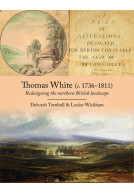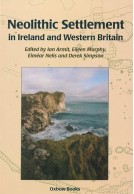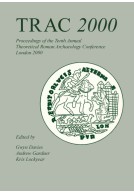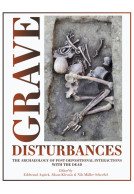Google Books previews are unavailable because you have chosen to turn off third party cookies for enhanced content. Visit our cookies page to review your cookie settings.
Living with the Flood (Paperback)
Mesolithic to post-medieval archaeological remains at Mill Lane, Sawston, Cambridgeshire – a wetland/dryland interface
Imprint: Oxbow Books
Pages: 128
Illustrations: colour and b/w illustrations
ISBN: 9781782979661
Published: 30th November 2015
Script Academic & Professional
Pages: 128
Illustrations: colour and b/w illustrations
ISBN: 9781782979661
Published: 30th November 2015
Script Academic & Professional
You'll be £5.00 closer to your next £10.00 credit when you purchase Living with the Flood. What's this?
+£4.99 UK Delivery or free UK delivery if order is over £40
(click here for international delivery rates)
Order within the next 6 hours, 4 minutes to get your order processed the next working day!
Need a currency converter? Check XE.com for live rates
(click here for international delivery rates)
Order within the next 6 hours, 4 minutes to get your order processed the next working day!
Need a currency converter? Check XE.com for live rates
The site at Mill Lane, Sawston, represents millennia of human activity within a dynamic and changing landscape setting. River valleys have been a focus for human activity since the early Holocene and, in addition to providing abundant archaeological evidence for this activity, the proximity to water also highlights the potential for the preservation of both archaeological remains and palaeoenvironmental source material. However, human activity within river valleys also commonly bridges areas of both wetland and dryland; ecological zones which are often approached using quite different archaeological methods and which present considerable differences in levels of archaeological visibility and preservation. The site at Mill Lane offered an uncommon opportunity to explore the interface between these two types of environment.Here we present the results of the study of a wetland/dryland interface on the edge of palaeochannels of the River Cam in Cambridgeshire. Through the integrated archaeological and palaeoenvironmental analysis of a site on the western edge of Sawston, a detailed picture of life on the edge of the floodplain from the late glacial to the post-medieval periods has been developed. At the heart of this is the relationship between people and their changing environment, which reveals a shifting pattern of ritual, occupation and more transitory activity as the riparian landscape in a wooded setting became a wetland within a more openly grazed environment. The presence of potential built structures dating to the early Neolithic, the early Bronze Age and the early Anglo-Saxon periods provides some sense of continuity, although the nature of these structures and the environmental context within which they were constructed was very different.
Customers who bought this title also bought...
Other titles in Oxbow Books...
















